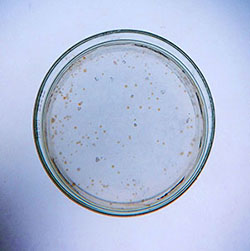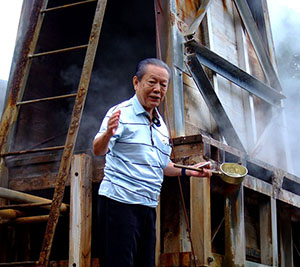ThermusQ is an initiative to gather all the information on Thermus thermophilus, to integrate all those pieces of information and to biuld a simulator of T. thermophilus that help understand the molecular mechanisms of life in the organism.
T. thermophilus is an extreme thermophile that grows optimally between 70 and 75°C. The bacterium was first isolated by Dr. Tairo Oshima "on 23rd September 1968, from a hot spring (80°C, pH 6.3) at Mine, Shizuoka Prefecture, Japan" (quoted from Tairo OSHIMA and Kazutomo IMAHORI (1974) Description of Thermus thermophilus (Yoshida and Oshima) comb. nov., a Nonsporulating Thermophilic Bacterium from a Japanese Thermal Spa, International Journal of Systematic Bacteriology, 24 (1), 102-112). Mine Onsen hot spring is located at 34.7569 N and 138.9825 E. This finding triggered excavation of many T. thermophilus strains worldwide. Strains HB8 and HB27, which were isolated from Mine Onsen hot spring, have been extensively studied, making much use of their high thermostability. The genome sequences of strains HB8 and HB27 including plasmids were determined in 2004. The determination of genome sequences of other strains, such as JL-18, TMY, TTHNAR1, HC11, HB5018, AA2-20, AA2-29 and so forth, has followed. HB8 is considered as a type strain in the research community.

